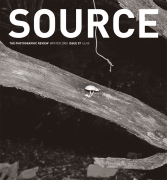Law
Albums and Books
by Ronan Deazley
Issue 57 Winter 2008
View Contents ▸
The fourth estate is under siege: the number of public figures initiating claims before the British courts for libel and defamation has doubled in the last three years; Sienna Miller recently launched a landmark legal action against the paparazzi for harassment under the Protection from Harassment Act 1997; and Max Mosley, in the wake of his success before the High Court, has vowed to take his cause further, to the European Court of Human Rights, in an attempt to further advance an individual’s right of privacy within the British legal system. Paul Dacre, Editor-in-Chief of the Daily Mail, in a recent tirade against the erosion of the freedom of the press, has responded by pointing an accusatory finger at Conditional Fee Arrangements (no-win, nofee), the role that one judge (Mr Justice Eady) has played in shaping the current jurisprudence on privacy in Britain (see Source 51), and ‘the wretched Human Rights Act’. Time, I thought, to tackle an issue of real substance: should wedding books be standard or zero-rated for VAT purposes?
In the recent unreported decision of Risbey’s Photography Ltd v. Revenue & Customs Commissioners (VAT & Duty Tribunal, Manchester, August 2008), the question of when a book of photographs is or is not a book was very much to the fore. Risbey’s Photography, based in Darlington, is a familyrun business that has operated since 1912. Specializing in wedding photography, they offer a wedding package that includes the production of a book containing selected images of the wedding day, sometimes accompanied by relevant text (marriage vows, readings and speeches, and so on). In terms of the manufacture of these wedding books, while standard printing paper is used, the pages are bonded together using a series of glues resulting in an object that has relatively rigid flat thick pages. The inside cover is then bonded to the outside cover made by traditional techniques of cardboard cover wrapped in leather with metal corners, and the word ‘Wedding’ is stamped on the outside cover. Once bound, the book cannot be altered; it remains a permanent record of the event. Moreover, once finished, additional copies of the book can be made available to family and friends (albeit paid for by the customer commissioning the same). The books, however, are not made available for sale to the general public, and they do not have an ISBN number.
Riseby’s argument was that the wedding books they produced exhibited all the ordinary qualities of a book, as a result of which they should be zero-rated in accordance with the Value Added Tax Act 1994 (Schedule 8, Group 3). The Revenue & Customs Commissioners, on the other hand, countered that the wedding books did not exhibit the characteristics ordinarily associated with books: the pages were significantly thicker than pages normally found in a book; the function of the wedding book was simply to display pictures of the wedding; and, when text was included, it conveyed no information beyond the context of the wedding and as such had no value in its own right. In short, a wedding book, they argued, served the same purpose as a wedding album which was, for VAT purposes, standard rated (in accordance with Draper v. Commissioners of Customs and Excise (1981)).
The Tribunal agreed with the Revenue Commissioners. Noting that the relevant provisions within the VAT Act do not define the term ‘book’, they turned to the judgment of Mr Justice May in Customs and Excise Commissioners v. Colour Offset Limited [1995] which concerned the VAT rating of diaries and address books. The concept of a book, May J considered, should be given its ordinary meaning, and the ordinary meaning of the word book should be "limited to objects having the minimum characteristics of a book which are to be read or looked at". Blank diaries and blank address books, he concluded, were not books in the ordinary sense of the word.
Clearly the Risbey wedding books were objects designed to be looked at and read (as and when they contained any text). However, the Tribunal concluded that, while the wedding book in question "shared many of the physical characteristics of a book, in that it has leaves of paper bound together within a hard cover" it nevertheless did not amount to a book. The definition of a wedding album, they considered, "should not be restricted to a traditional form which allowed the removal and insertion of photographs""a collection of photographs... of interest only to those persons immediately connected with the wedding".
In this modern age of celebrity-obsessed tittle-tattle, it is all to easy to overlook the fact that some of the great metaphysical questions of the day are often pondered and resolved in the tax courts: are Pringles crisps? (answer: no), are Jaffa Cakes cakes? (answer: no), or, are roller-coasters a form of transport? (answer: no). Are books best defined by the fact that they are ‘designed to be read or looked at’? Do books cease to be books if they are, in fact, no longer read or looked at? Or, should a book’s intended audience determine its status as a book? Whatever the answer to these questions, for the moment at least, we now know that wedding books are not in fact books, but albums.
Other articles by Ronan Deazley:





